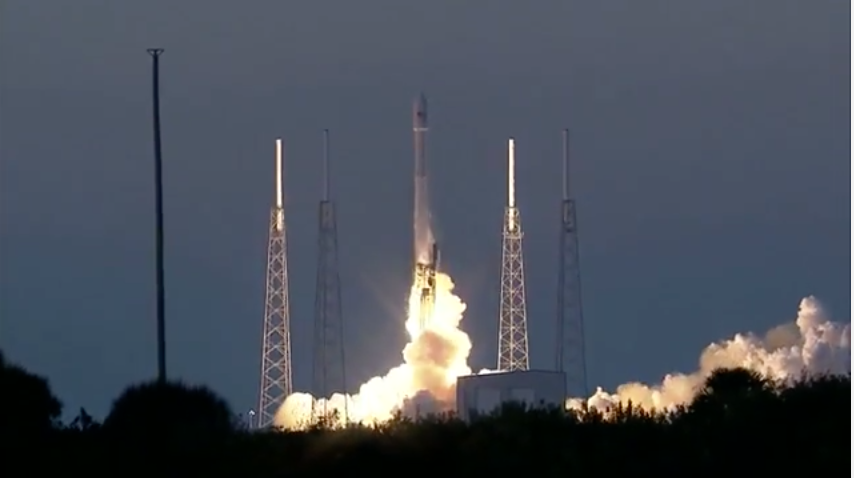[SatNews] The DSCOVR launch was successful despite the fact that the satellite sat in storage for more than 13 years for NOAA, NASA and the U.S. Air Force. The other suppliers who helped build the satellite were also forced to wait and see if in fact the launch was going to be successful.

Successful launch of DSCOVR with Moog's engine after 13 years in storage.
Now we know that all went swimmingly, and one of the major reasons for the success was a result of Moog Inc.'s contribution. Moog (NYSE: MOG.A and MOG.B) Space and Defense Group supported NOAA’s Deep Space Climate Observatory (DSCOVR) satellite that launched on February 11, from Cape Canaveral, Florida, atop a Falcon 9 launch vehicle. DSCOVR is a partnership between NOAA, NASA and the U.S. Air Force to provide a rapid advance warning to utility companies and satellite operators when solar flares approach Earth.
Technology used to develop the DSCOVR mission was originally delivered over a decade ago when the mission was known as Triana. Updates to the spacecraft, including relocation of the magnetometer to a better observing location to ensure the best measurements possible and replacement batteries, along with original technologies were tested before the launch.
Moog provided MONARC 5N monopropellant engines and thruster valves to NASA for the Triana mission in 1999. Moog provided critical technical support for recertification of the engines for the DSCOVR mission after more than 13 years in storage, drawing on previous experience with successful operation of MONARC engines after 19 years in storage at NASA Marshall. Nearly 600 5N thrusters have been delivered and flown, maintaining a 100 percent success rate. When removed from storage, the engines were functionally testing and met the original performance specifications.
The 5N engines will be used for attitude control and minor adjustments to maintain the satellite’s Lagrange-1 (L-1) orbit one million miles from Earth; DSCOVR is the nation’s first operational spacecraft in deep space. DSCOVR has two key burns: Mid-Course Correction (MCC) and Lissajous Orbit Insertion (LOI). The thrusters will be used to perform the MCC for 50 minutes and LOI for 5.3 hours. After reaching L-1, DSCOVR will perform station-keeping and momentum unloading with the thrusters.
Data processed by DSCOVR will be used by forecasters at NOAA’s Space Weather Prediction Center (SWPC) for timely and accurate warnings of solar storms that have potential to disrupt nearly every major public infrastructure system; including satellites, GPS, aviation, and the electric power industry. DSCOVR will typically be able to provide a 15 to 60 minute warning time from its position in space and will give forecasters more reliable measurements of solar wind speed, improving their ability to monitor harmful solar activity, and replace an aging research satellite (ACE) currently used to warn of impacts to Earth. Data from the satellite will also be used to improve predictions of geomagnetic storm impact locations, crucial to national security and economic well-being.
Moog Inc. is a worldwide designer, manufacturer, and integrator of precision control components and systems. Moog’s high-performance systems control military and commercial aircraft, satellites and space vehicles, launch vehicles, missiles, automated industrial machinery, wind energy, marine and medical equipment. Additional information about Moog’s Space Sector can be found at www.moog.com/space.